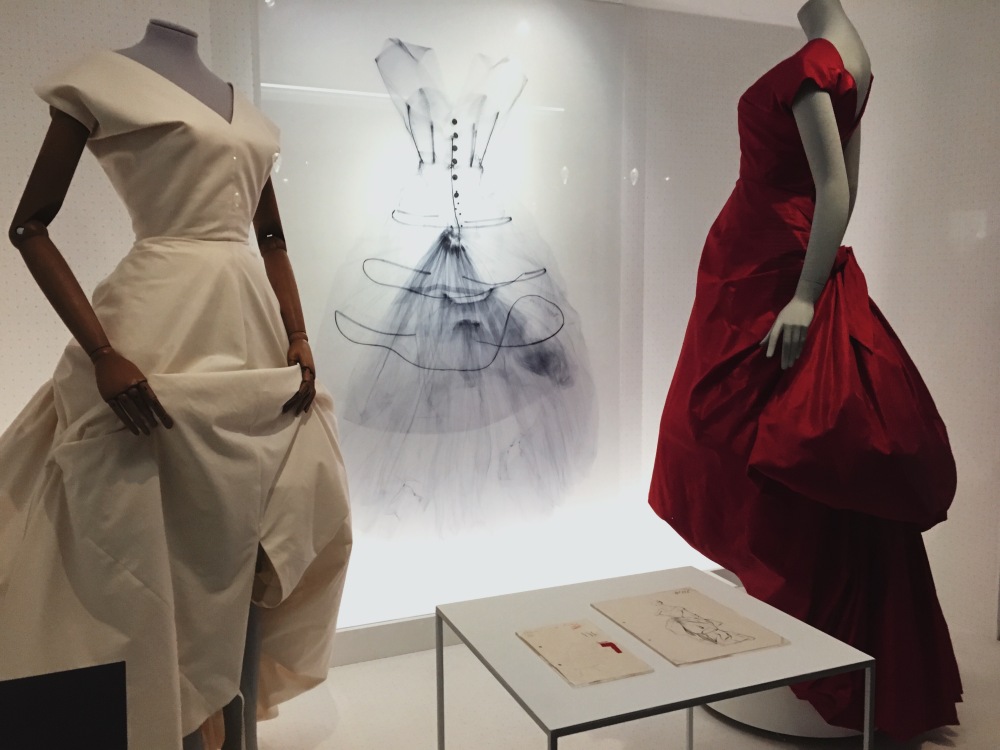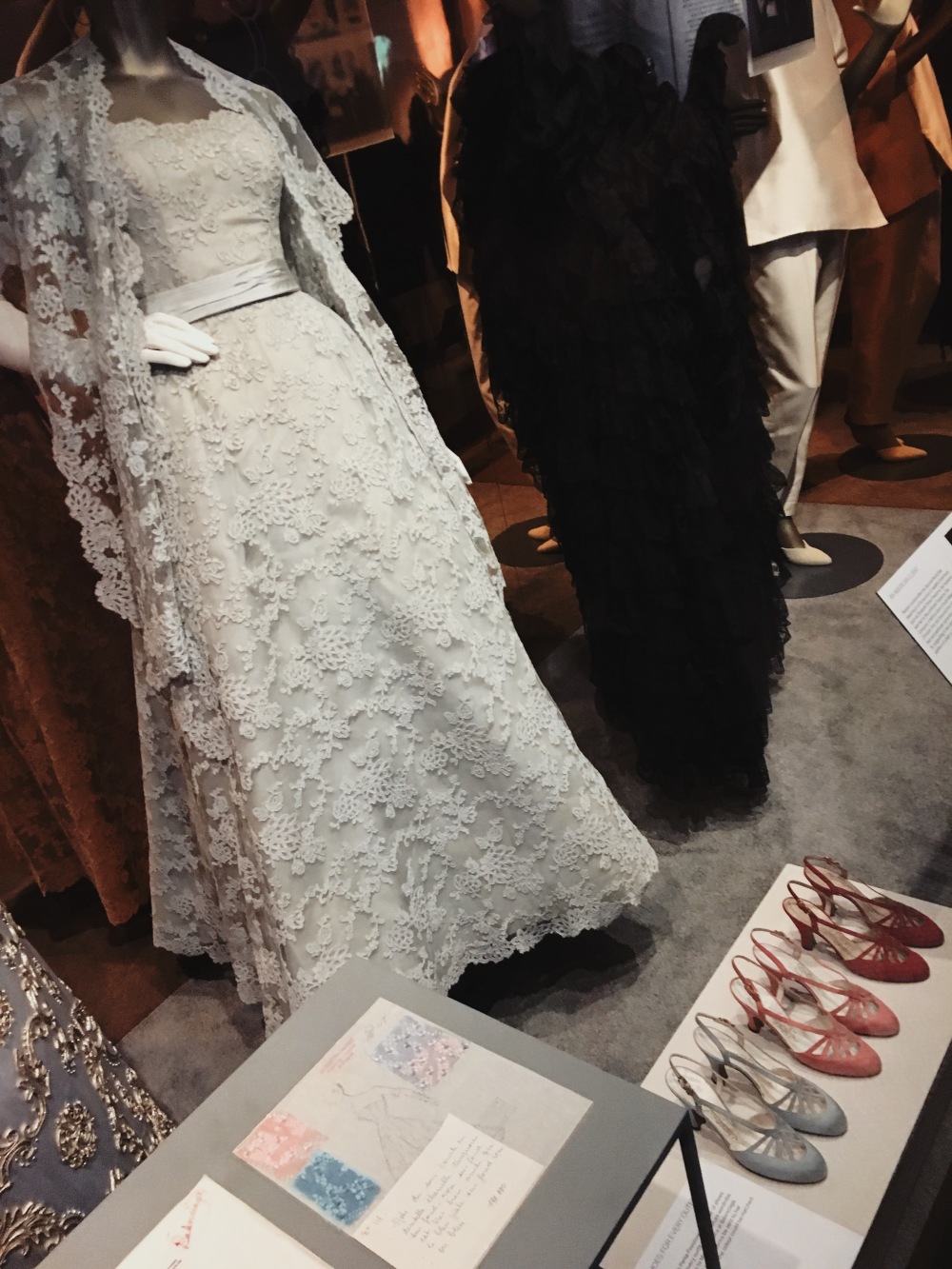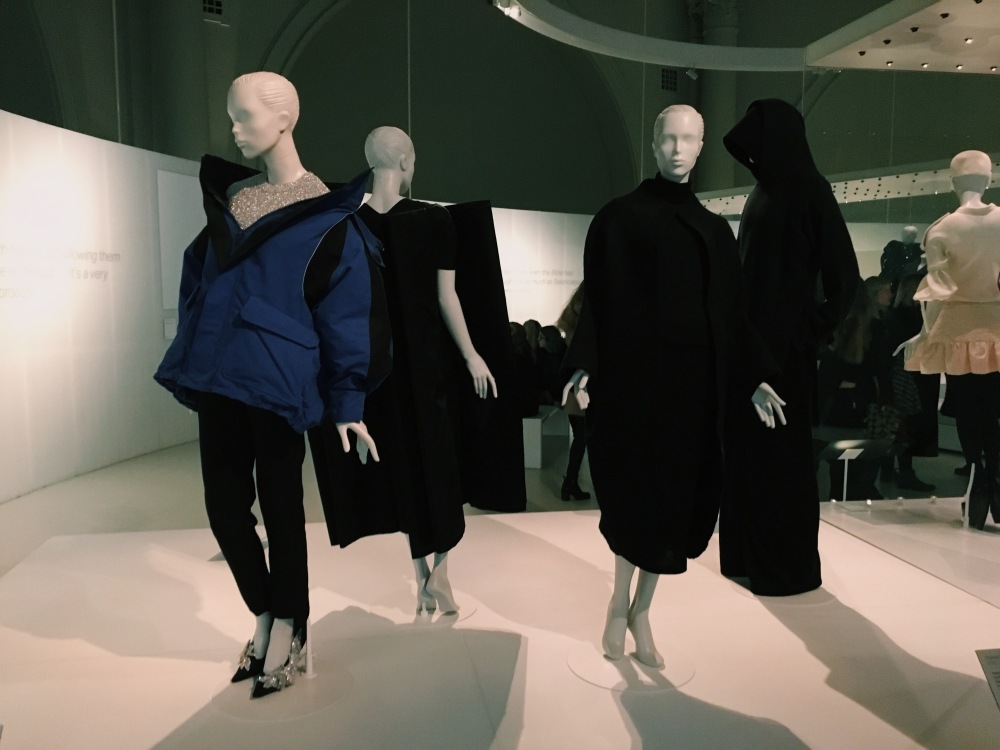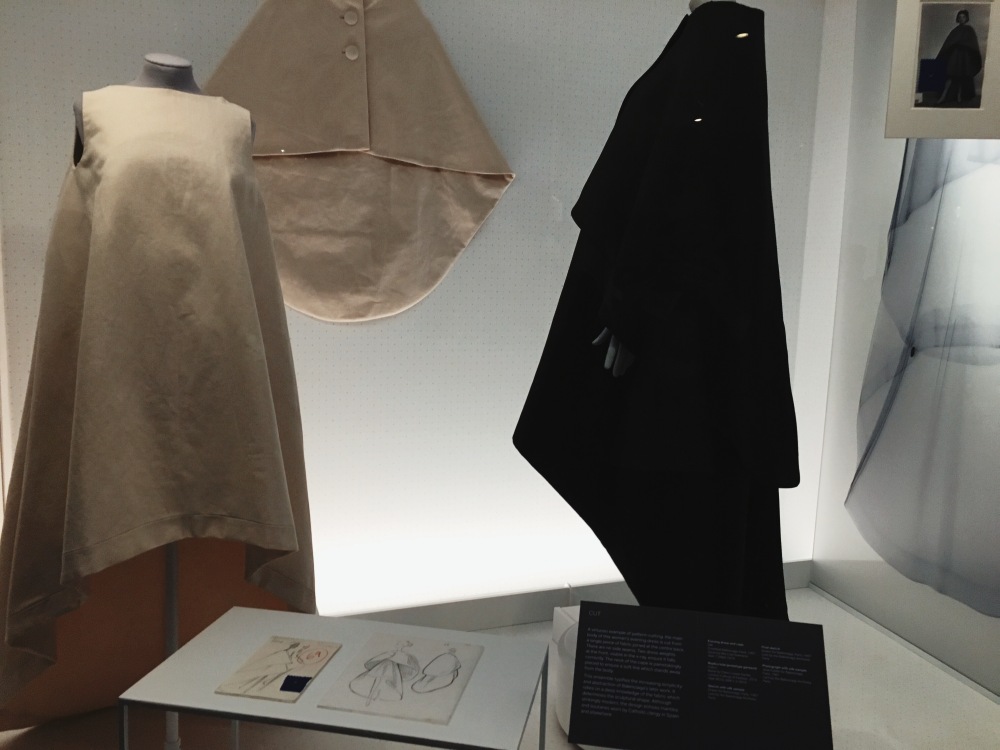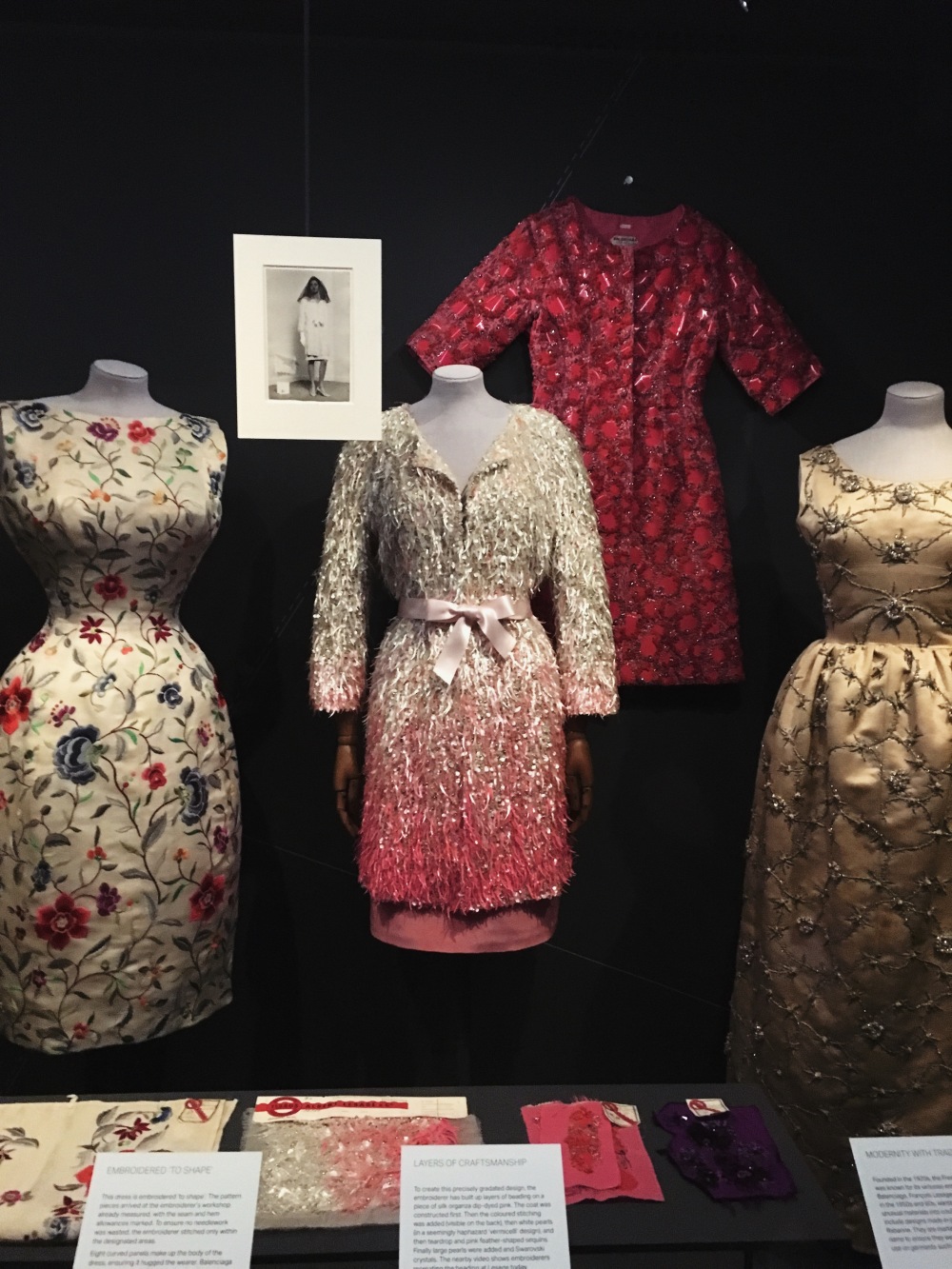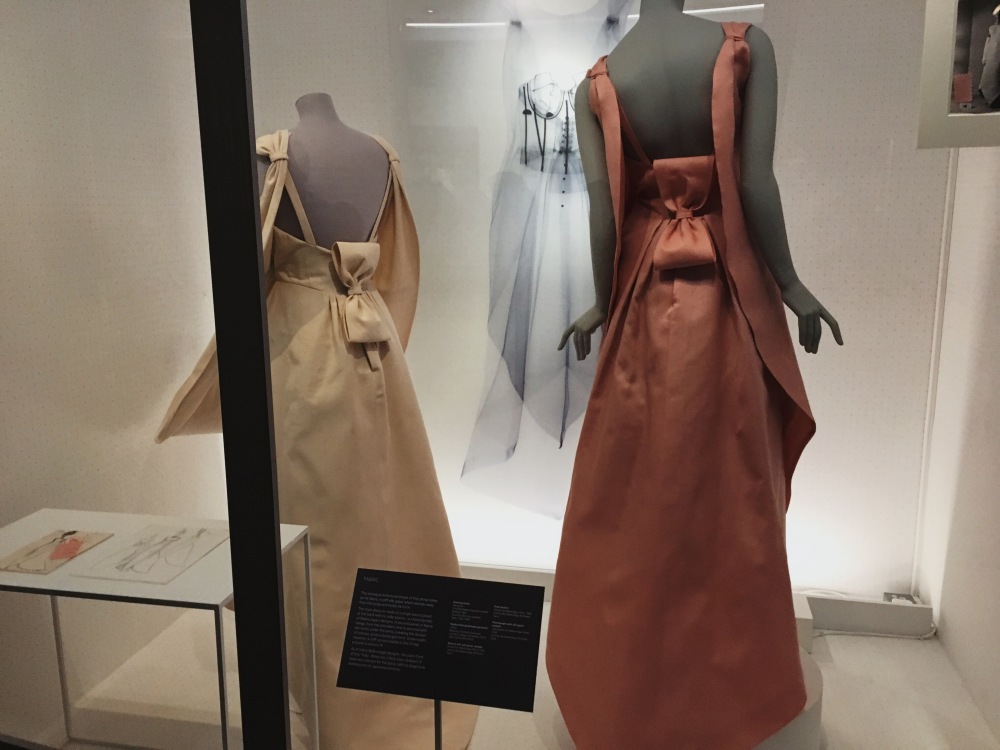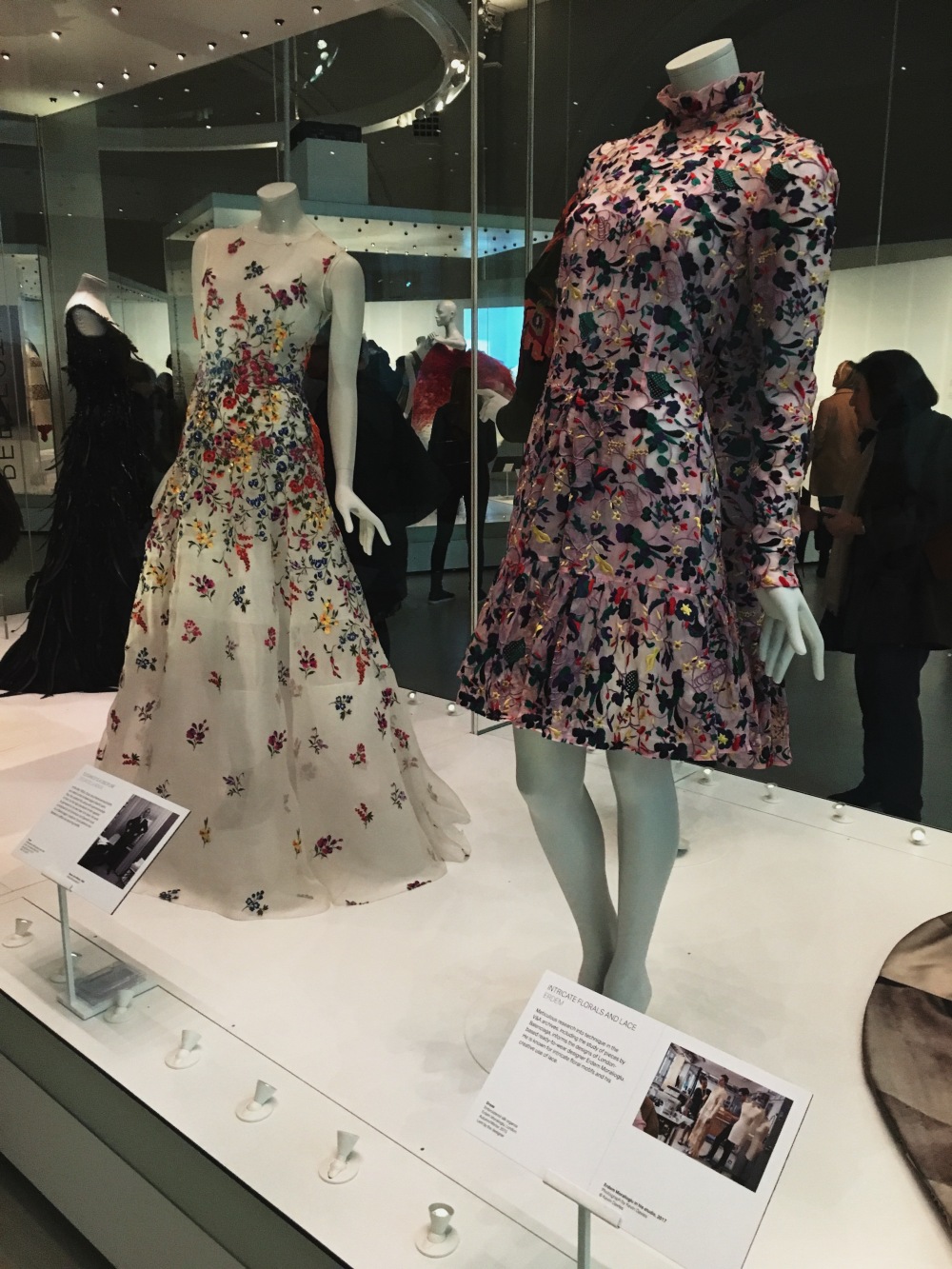Fashion has the innate ability to reveal so much about one’s culture, history, and character. Clothing can bring people together, tear people apart, or disclose things about individuals that dive below surface level assumptions. These specific qualities are no better demonstrated than in the Victoria & Albert Museum’s recent exhibit, “Balenciaga: Shaping Fashion.” The showcase displays the late work of legendary designer Cristóbal Balenciaga, and the impact of his innovations on a community of designers that followed. Curated by Cassie Davies-Strodder, this exhibition proves that Yves Saint Laurent and Christian Dior were not the only ones of their time working with ingenious patterns and experimental shapes, and to many, Balenciaga was a leader in the industry of haute couture.
Walking in to the exhibition room, one gets an understanding of Balenciaga’s early days in fashion, emphasizing the Spanish influence, sculptural quality, clever manipulation of textiles, and vivid use of pigment and texture in his work. The dimly lit space and detailed mosaic floors give one the impression of antiquity and tradition, while still highlighting the delicate nature of the textiles on display. The showcase demonstrates the evolution of the designer, with a clear emphasis on the desire for perfection in his work. The lower level of the exhibit focuses on his work at the atelier in the 1950s and 60s, in which he stressed the importance of tailoring, the variety and quality of fabric, and the importance of pattern-cutting, from his more modest ready to wear collections to his extravagantly embellished couture pieces.
Journeying upstairs, there is an evident change in the tone of the atmosphere. The detailed architecture of the V&A Museum is covered by crisp white paneling, sleek display cases, and vast pillars covered in digital images, creating a modern oasis from the vintage environment downstairs. The upper floor explores Balenciaga’s impact on later generations of fashion designers, and how his emphasis on craftsmanship remains as tradition today. Some pieces break free from the display cases, and show an evident focus on the introduction of new materials, the desire for perfection, and the ornate use of texture and volume. Turning to go back downstairs, there is a striking display at the top that vividly encompasses the spirit of the entire exhibit. Standing to the left is a women’s suit that Balenciaga designed in 1951, while directly adjacent is an almost identical suit made by Demna Gvasalia for Balenciaga in 2016. This final showcase represents the timelessness in Balenciaga’s designs, and why he acts as such a perfect subject for this retrospective.
Regardless of the prominence of history and legacy in this exhibition, the real centerpiece of this experience is the emphasis on the process of making of the garments. Vintage pieces are shown alongside their x-ray counterparts from patternmaking, along with technical sketches, fabric swatches, and photographs of each piece worn by its original fit model. This gives the viewer the impression that he or she is in the workshop with Balenciaga, viewing the development of the clothing from conceptualization to reality. This process is further enlightened upon with revolving mannequins, which allow the audience to get a 360-degree view of the garment, and the inclusion of animated videos showcasing the development of the designer’s patterns from two-dimensional sketches to three-dimensional articles of clothing. Whether it is in his innovations like the sack-dress or one-seam coat, or in his timeless convertible capes or silk taffeta gowns, Balenciaga’s artistry and technique are not overlooked in this retrospective.
As a curator, Davies-Strodder does an impeccable job making use of a dual-story space and making an evident distinction between the two areas. However, as compelling as the breathtaking garments were upstairs, as a viewer, there is an evident desire to go back downstairs to see more of Balenciaga’s designs. There is a lack of consistency that exists between the historic garments downstairs and the introduction of entirely different designers upstairs. Nonetheless, the ornate detail that is put into the showcasing of Balenciaga’s entire process of production downstairs gives the audience more than enough satisfaction and appreciation for the designer’s work. For a designer that was such a private person, and who banned the press from entering his fashion house for the first ten years of his work, it is fascinating how much information is included in such an exhibit.
Christian Dior said it best when he said, “Haute couture is like an orchestra whose conductor is Balenciaga. We other couturiers are the musicians and we follow the direction he gives.” The ability to go beyond the surface level beauty of fashion and recognize the skill and craftsmanship that goes into the work of haute couture truly sets this exhibition apart from its costume counterparts, and makes it a worthwhile visit while in London.
